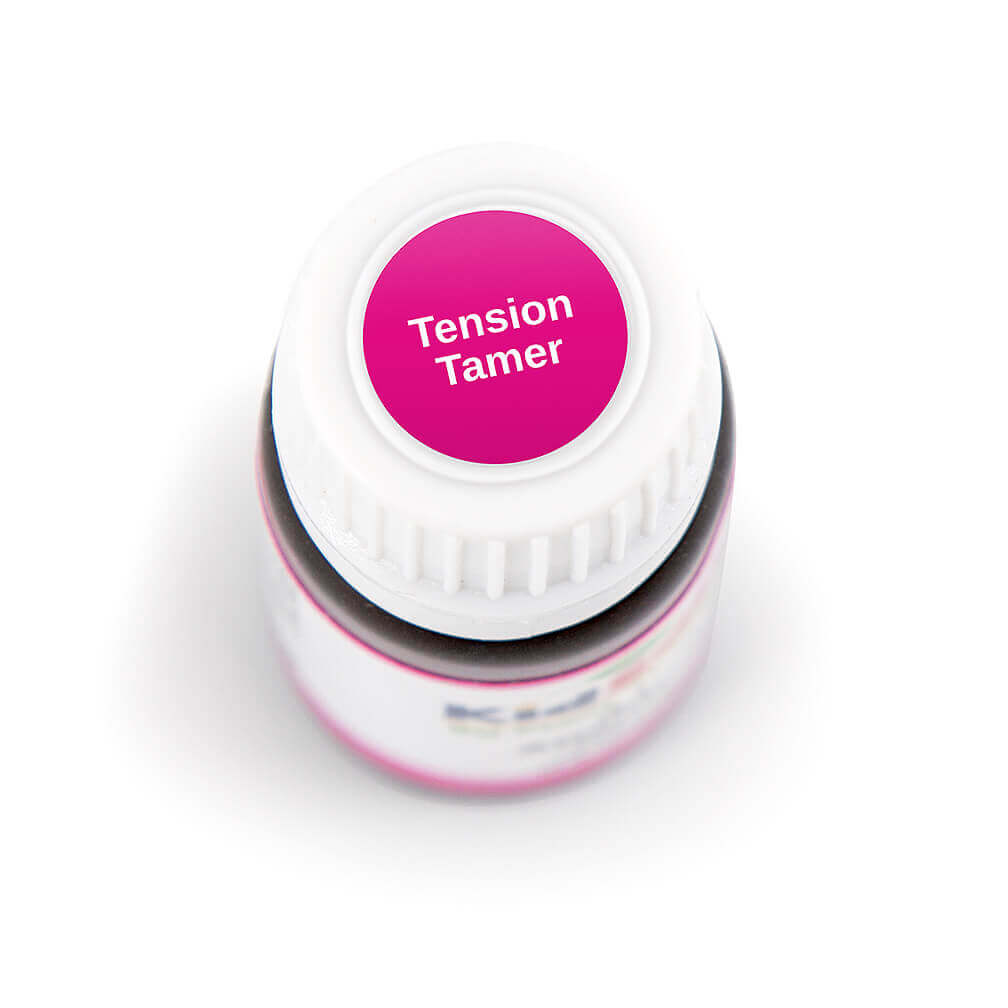Looking for essential oils for headaches?
Headaches are famous for bringing us down whether a migraine, tension, cluster, sinus or otherwise. No matter what you’re doing — working, relaxing, playing, reading, studying, getting ready for bed — there is one surefire way to put a damper on it: a headache.
Headaches can sneak up on us at the worst of times and give us no chance to prepare for the lingering discomfort. Before you reach for whatever pain-relieving medication you have on hand, why not give essential oils a try? With the school season quickly approaching, there’s no better time to prepare for this distracting discomfort!
First, determine the type of headache you have

First and foremost, you need to decide what type of a headache you have. Is it a tension headache, where constant pressure wraps around your head? Try oils that help reduce stress and naturally ease tension away.
- Cluster headaches: These headaches typically include localized pain, watery eyes, and a runny nose so they benefit from oils that help reduce pain and ease congestion.
- Sinus headaches: Have pressure in the face or forehead? You might try oils known to help break up congestion and open up breathing. Using oils that support the immune system can help keep your body strong while fighting off the source of this headache which may be a sinus infection.
- Migraine headaches: Choose oils that help to reduce feelings of anxiety and help with pain relief. If your migraine is accompanied by digestive issues or nausea, certain essential oils can help with that, too.
Then choose the best essential oil for headache relief – here are our 5 favorites:

- Peppermint Oil: Cool and fresh, Peppermint can help relieve the acute pain associated with headaches. Diluting Peppermint in your favorite carrier oil and applying it topically on the temples and back of the neck has shown to relieve pain and be a well-tolerated alternative to taking the edge off of a headache . Also, it is great to inhale when you have a queasy stomach, which can sometimes accompany really painful headaches.
- Lavender Oil: With its wide range of therapeutic properties, Lavender really is an essential part of any essential oils home first aid kit. The sedative effects are what makes this oil best if you are experiencing head and neck tension before going to bed. It is also known to reduce stress and helps relieve feelings of restlessness . Since the root cause of a headache could be factors including stress, exhaustion, and irritation, Lavender is a wonderful way to address these issues. Lavender is also a great option for children.
- Eucalyptus Globulus Oil: Known for its relaxing, pain-reducing effects and helping to break up mucus and other congestion issues, making this oil especially useful if you are suffering from a sinus headache. It’s also a great way to open the airways and help relieve sinus pressure .
- Rosemary 1,8-Cineole Oil: Stimulating and refreshing, this oil is known to improve alertness and reduce stress. It can help reduce pain, relax muscles, and improve circulation. Studies have even been found to help with drug withdrawal symptoms, including headaches .
- Chamomile Roman Oil: A wonderful choice for helping headache symptoms associated with stress or exhaustion. Chamomile Roman helps to relax tension in the body and is best used before bed, due to its sedative and relaxing properties . Like Lavender, Chamomile Roman is safe for children to use.
Next, try out this KidSafe DIY blend of essential oils to help calm your throbbing headache and get back on top of your game!
Brain Tamer Roll-On Essential Oil Blend (KidSafe)
What you’ll need:
- 2 drops Spearmint essential oil
- 2 drops Grapefruit Pink essential oil
- 1 drop Chamomile Roman essential oil
- 1 drop Bergamot essential oil
- 10 mL (2 tsp) carrier oil of your choice
- 10 mL roller bottle
Add all these products to your cart
What you’ll do:
First, add essential oils to empty roller bottle. Then fill with a carrier oil. Finally, apply to temples and back of the neck.
Don’t want to blend your own essential oils for headaches?
 Consider trying one of our specially formulated essential oil synergies for relieving tension in the neck and head area (also available in pre-diluted roll-ons!):
Consider trying one of our specially formulated essential oil synergies for relieving tension in the neck and head area (also available in pre-diluted roll-ons!):
- Tension Relief Synergy: Perfect to help relieve tension in the neck and head area, Tension Relief helps ease discomfort and calms your mind so you can think clearly again.
- Tension Tamer Synergy: Similarly, this essential oil blend helps relieve occasional head and neck tension. However, this blend is specifically formulated for children ages 2 to 10.
You have the oils, now how do you use them?
 Keep in mind that everyone is unique and the effectiveness of essential oils can vary between individuals. Many people find success with applying the diluted oils directly to your forehead or back of the neck. Since these are sensitive areas, we recommend a maximum dilution of 1%. To maximize effectiveness, you can follow the topical application with a warm compress, used on your forehead or neck, and reapply oils as needed.
Keep in mind that everyone is unique and the effectiveness of essential oils can vary between individuals. Many people find success with applying the diluted oils directly to your forehead or back of the neck. Since these are sensitive areas, we recommend a maximum dilution of 1%. To maximize effectiveness, you can follow the topical application with a warm compress, used on your forehead or neck, and reapply oils as needed.
Also, never underestimate the power and convenience of a personal aromatherapy inhaler! Fill it with your favorite tension-relieving oil and keep it with you wherever you go. Then you’ll always be ready when that familiar throbbing begins!
Finally, check out one of Certified Aromatherapists, Retha Nesmith, discuss essential oils for headaches on one of our Live shows (originally posted on August 10th, 2018):
References:
Gobel, H., Fresenius, J., Heinze, A., Dworschak, M., Soyka, D. (August 1996). Effectiveness of Oleum menthae piperitae and paracetamol in therapy of headache of the tension type. Retrieved from https://www.ncbi.nlm.nih.gov/pubmed/8805113
Gobel, H., Schmidt, G., Dworschak, M., Stolze, H. (October 1995). Essential plant oils and headache mechanisms. Retrieved from https://www.ncbi.nlm.nih.gov/pubmed/23196150
Koulivand, P. H., Khaleghi Ghadiri, M., & Gorji, A. (2013). Lavender and the Nervous System. Evidence-Based Complementary and Alternative Medicine : eCAM, 2013, 681304. https://doi.org/10.1155/2013/681304
Ben-Arye, E., Dudai, N., Eini, A., Torem, M., Schiff, E., & Rakover, Y. (2011). Treatment of Upper Respiratory Tract Infections in Primary Care: A Randomized Study Using Aromatic Herbs. Evidence-Based Complementary and Alternative Medicine : eCAM, 2011, 690346. https://doi.org/10.1155/2011/690346
Solhi, H., Salehi, B., Alimoradian, A., Pazouki, S., Taghizadeh, M., Saleh, A. M., & Kazemifar, A. M. (2013). Beneficial Effects of Rosmarinus Officinalis for Treatment of Opium Withdrawal Syndrome during Addiction Treatment Programs: A Clinical Trial. Addiction & Health, 5(3-4), 90–94.
Srivastava, J.K., Shankar, E., & Gupta, S. (2010). Chamomile: A herbal medicine of the past with a bright future (Review). Molecular Medicine Reports, 3, 895-901. https://doi.org/10.3892/mmr.2010.377











